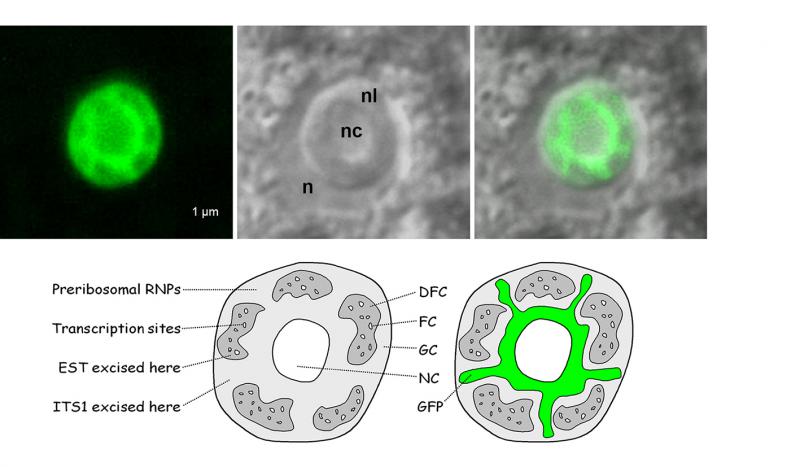The pescadillo gene was originally identified and characterized through a mutational screen in zebrafish, Danio rerio, affecting embryonic development. Pescadillo is highly conserved from yeasts to human and has been shown to impact on both the cell cycle and on ribosome biogenesis. However, the biological function and transcriptional regulation of the plant orthologs remain unclear. By implementing a combination of molecular and genetic approaches, we have characterized the Arabidopsis thaliana (AtPES) and Zinnia elegans (ZePES) pescadillo orthologs and its role in plant development.
ZePES, which is expressed differentially throughout tracheary element differentiation of Zinnia mesophyll cells, is upregulated during G1/S and G2/M transition. Both ZePES and AtPES are able to complement the temperature-sensitive phenotype of yeast degron strain Y40047, impaired in the NOP7/YPH1 gene (pescadillo ortholog), indicating a functional conservation between the yeast and plant gene products. AtPES localizes predominantly in the granular component of the plant nucleolus, the site of internal spacer 1 excision and pre-ribosomal assembly.
RNAi transgenic lines display severely compromised meristem structures and a reduction of the primary root length of up to 70%. The correct pattern of the cell files is distorted, whereas in the root elongation and differentiation zone the epidermal and cortex cells appear abnormally enlarged. Yeast two hybrid and BiFC experiments confirmed that AtPES interacts physically with AtPEIP1 and AtPEIP2, the orthologs of the murine Bop1 and WDR12. AtPES is expressed during vegetative and reproductive development predominantly in meristematic tissues and actively dividing cells. Promoter deletion analysis reveals that AtPES expression depends on a number of transcription factor binding sites, with the TELO-box being a crucial site for regulating its accurate tissue-specific manifestation. Taken together, our data indicate that AtPES is firmly regulated at the transcriptional level and that the corresponding protein plays a role in root developmental processes.
| Zografidis et al., 2007.pdf | 3.94 MB | |
| Zografidis et al., 2014.pdf | 5 MB |







